#Yponomeutidae
Text
Moth Of The Day #139
Bird-cherry Ermine
Yponomeuta evonymella
From the yponomeutidae family. They have a wingspan of 16-25 mm. They occupy all sorts of habitats. They can be found all throughout Europe.
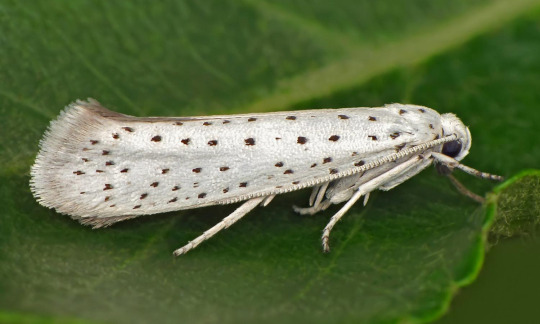

#moth#moths#lepidopterology#lepidoptera#pretty moth#nature#insect#bugs#moth of the day#motd#insects#bug#bugblr#lepidoptery#entomology#bird-cherry ermine#bird-cherry ermine moth#yponomeutidae#yponomeutidae moth
251 notes
·
View notes
Photo

36 notes
·
View notes
Text
Moth of the Week
Bird-Cherry Ermine
Yponomeuta evonymella

Image source
The bird-cherry ermine is a part of the family Yponomeutidae, the ermine moths. It was first described in 1758 by Carl Linnaeus. It was originally placed in the genus Phalaena but was later transferred to the genus Yponomeuta, becoming Yponomeuta evonymella. This species’ common name comes from their main food plant: Bird Cherry.
Description This moth has a white thorax, head, and forewings. The forewings have five horizontal lines of small black dots, and a few black dots are also on the back of the thorax. The hindwings are shorter and wider than the forewings and are a beige/light brown color. Both the forewings and hindwings have a fringe on the end however, the forewings’ white fringe is short and only on the outer margin while the hindwings’ brown fringe is all over the hindwings’ edges besides the parts touching the forewings. Additionally the hindwings’ fringe is longer on the bottom of the wing. This moth’s thin and wiry antennae are two thirds the length of the forewing and are usually white.
Wingspan Range: 16 - 25 mm (≈0.63 - 0.98 in)
Diet and Habitat This species’ caterpillars mainly feeds on Bird Cherry (Prunus padus), but they also occasionally feed on cherry (Prunus) or buckthorn (Rhamnus). They are known to sometimes be pests of the bird-cheery because the caterpillars pupate and feed together in web like nests that can cover whole trees. This web keeps them protected and allows them to eat mostly unbothered by other insects and predators. The tree is still likely to survive after this, but may grow less in the following growth season/spring. Adults feed on nectar.
This species can be found in Europe and the northern and eastern parts of Asia. They live in many habitats such as river lowlands, deciduous forests, alluvial forests, stream banks with bushes and trees, gardens, parks, and more. Strangely according to Butterfly Conservation, this moth can be found “often far from the known foodplant.”
Mating This moth is seen in June to September and has only gerarion per year. Females let their eggs on the winter buds of their food plants.
Population sizes fluctuate, but it’s not uncommon for mass outbreaks of caterpillars to happen, which results in defoliated trees.
Predators This species is preyed on by parasitic wasps and seems to have few other predators.
Fun Fact This moth is attracted to light. Additionally when disturbed, this moth can skip away and falls to the ground. Note: this second fact does not currently have a citation on Wikipedia so it may be disproven in the future.
(Source: Wikipedia, Butterfly Conservation)
#libraryofmoths#animals#bugs#facts#insects#moth#lepidoptera#mothoftheweek#Yponomeuta evonymella#bird-cherry ermine#Yponomeuta
105 notes
·
View notes
Text
#1862 - Urodus parvula - Bumelia Webworm
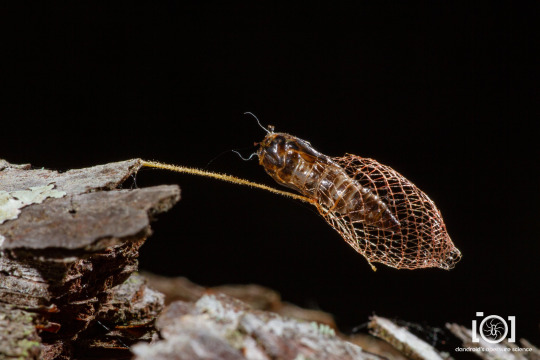
Photo from Dandroid's Aperture Science, Squintomologist, a Florida-based photographer, used with permission.
His comment on the photo “This is a quality cocoon design” and he’s right. It’s not the only insect to make a mesh cocoon - others include the ridiculously widespread Diamondback Moth (Plutella xylostella), Clouded Footman Moths (Anestia ombrophanes - assembled from their own hair), and Spongillaflies (aquatic lacewings that feed on freshwater sponges and bryozoans), but it’s certainly a very pretty version.
The Bumelia Webworm is found on the coastal plain of the SE USA, where they feed extensively on Red Bay Persea borbonia var. borbonia, but they also feed on Oak, Hibiscus, Florida bully AKA Florida Bumelia (Sideroxylon reclinatum), Orange, Camellia, Avocado, Quaking Aspen, and Willow. Which is an impressive range of hostplants, many with chemical defenses, for a caterpillar that apparently has no chemical defenses. Caterpillar populations can be quite large - one reported outbreak in 1913 in Seabreeze, Florida, was so severe that pedestrians carried umbrellas to keep them off. Adults are active through much of the year.
The caterpillars are approximately 12 mm long prior to pupation, with a yellow head, rows of irregular white patches with yellowish-orange spots along the body, and rows of elevated black pinacula (areas of sclerotized cuticle) and stout black hairs arising from the white patches. Adults are a very dark plain brown to smokey black, and rest with their wings folded back and roof-like over the abdomen.
The Urodids or False Burnet Moths are a small family, with three genera, formerly included in the family Yponomeutidae. Prior to that, the species was in the Zygaenidae, the Forester or Burnet Moths. It’s not exactly clear why they build open-mesh cocoons, or why it’s on a long stalk. It seems to be the standard across the Urodidae, and may be a compromise between defense against ants and not drowning in wet weather or succumbing to fungus - most species are found in the wet Neotropics.
3 notes
·
View notes
Text
Romantic relationship relating to the Dimensions and from the Muscle size and also Hilar and Mediastinal Lymph Node Metastasis at the begining of along with Locally Sophisticated Non-small Cell United states.
Other individuals claim regarding autonomy -- in which to obtain a a lot more representative consequence to the basic populace, online surveys ought not rule out individuals who don't would like to obtain their particular examination results. This kind of round desk debate takes a closer examine the above quarrels. We believe the international local community need to work towards regimen feedback regarding HIV monitoring while ensuring that members receive as well as understand their check benefits.An endoparasitoid wasp, Cotesia glomerata (Braconidae: Hymenoptera), parasitizes caterpillar in the diamondback moth, Plutella xylostella (Yponomeutidae: Lepidoptera). Parasitized G. xylostella displays immunosuppression and also developmental modification. Within this review, the actual parasitized larvae displayed reasonable reductions in storage meats (SPs) specially with SP1 beyond three SPs, nevertheless, there had been considerable mRNA level of SP1. Furthermore, the actual parasitization drastically inhibited scattering conduct regarding hemocytes, when a number translation inhibitory factor (HTIF)-like proteins had been recognized throughout cytoplasm. A bracovirus is often a union polydnavirus involving Chemical glomerata (CgBV) and has already been assumed like a primary parasitic aspect adjusting host bodily techniques. Below, all of us cloned three putative HTIFs produced from CgBV: Cg-HTIF(We), Cg-HTIF(II) and also Cg-HTIF(Three). Just about all Cg-HTIFs reveal string homologies using eukaryotic introduction factors pertaining to language translation as well as using a pair of other known HTIFs involving Cotesia plutellae bracovirus. Quantitative RT-PCR as well as immunoblotting assays established that these kinds of genetics had been largely expressed with overdue educational stage associated with R. xylostella parasitized by simply D glomerata. Transfection of your recombinant Cg-HTIF(d) throughout P. xylostella through microinjection expressed the gene as early as A dozen l and also maintained until finally Seventy two h, from which hemocyte behavior has been impaired and also the SP quantities ended up drastically lowered. Nonetheless, the particular term of Cg-HTIF(l) failed to prevent transcription of SP1. Co-injection of the recombinant vector along with double-stranded RNA distinct to be able to Cg-HTIF(My spouse and i) especially recoverable the particular hemocyte-spreading behavior along with SP1 translation. (Chemical) '09 Elsevier Inc. Almost all privileges earmarked.Considering that hepatocellular carcinoma (HCC) is often a hypervascular cancers, anti-angiogenic care is an alternative method of take care of HCC. In our review, we researched the actual antiangiogenic as well as antitumor connection between tum-1, a fragment involving tumstatin, gene transduction into HCC throughout vitro as well as in vivo. Turn-1 gene had been duplicated into a pSecTag2B mammalian appearance vehicle to construct pSecTag2B-tum-1. pSecTag2B-tum-1 as well as car or truck have been transfected straight into human HCC cellular material, PLC/PRF/5 tissues stably as well as Huh-7 cellular material transiently. pSecTag2B-tum-1 transfection slightly repressed the actual proliferation regarding both PLC/PRF/5 and Huh-7 cellular material inside vitro. Inclusion of programmed media (Centimeters) through turn-1 articulating PLC/PRF/5 cells substantially limited the actual impulsive and also vascular endothelial progress issue (VEGF)-induced proliferation and migration regarding human umbilical problematic vein Selleckchem BAY 87-2243 endothelial cells (HUVEC) inside vitro along with decreasing your VEGF-induced phosphorylation associated with both Akt as well as extracellular signal-regulated kinase (ERK) which might be recognized to mediate VEGF-induced growth along with migration regarding endothelial tissue.
1 note
·
View note
Text
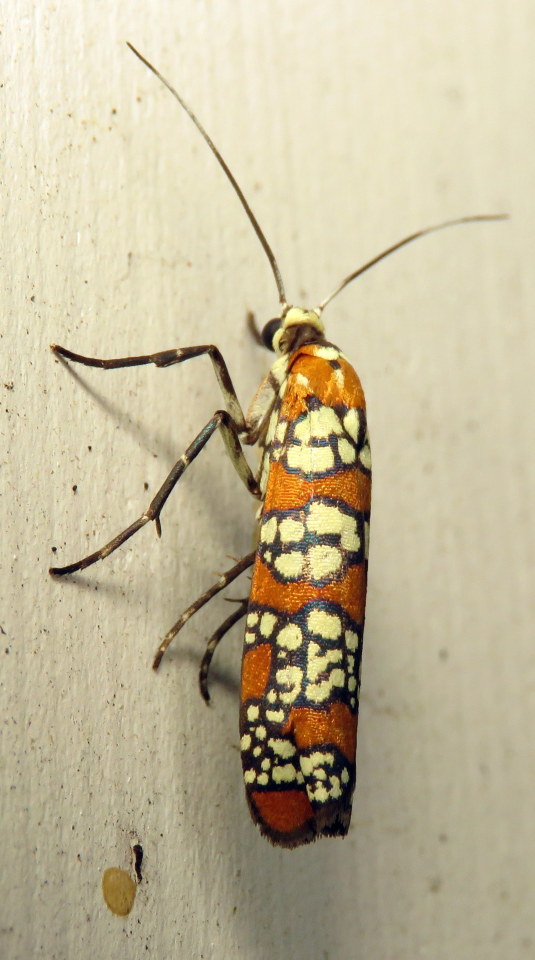

Bug of the Day
A reminder that somehow, somewhere, there is tree of heaven nearby...
(Ailanthus webworm moth, Atteva aurea)
100 notes
·
View notes
Photo
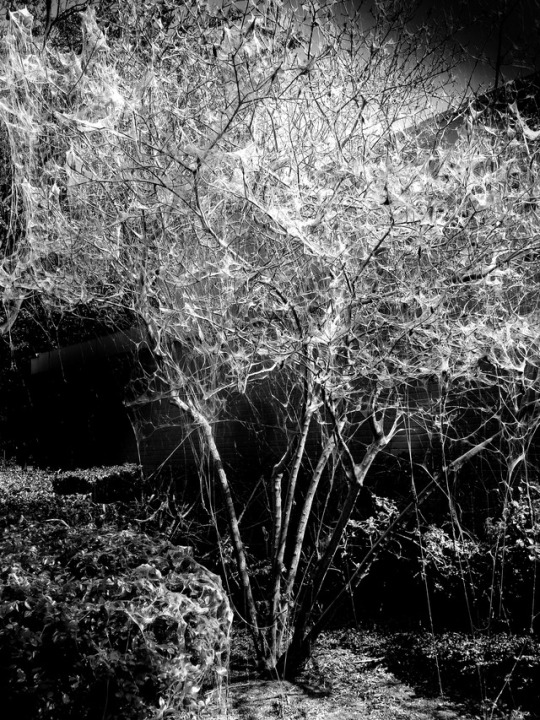
YPONOMEUTIDAE by IngoW.
#yponomeutidae#tree#wonder of nature#city landscape#landscape#black and white photography#tumblr radar#opot#my photography#artists on tumblr#original photography on tumblr#original photographers#photographers on tumblr#photographers#[email protected]
49 notes
·
View notes
Photo
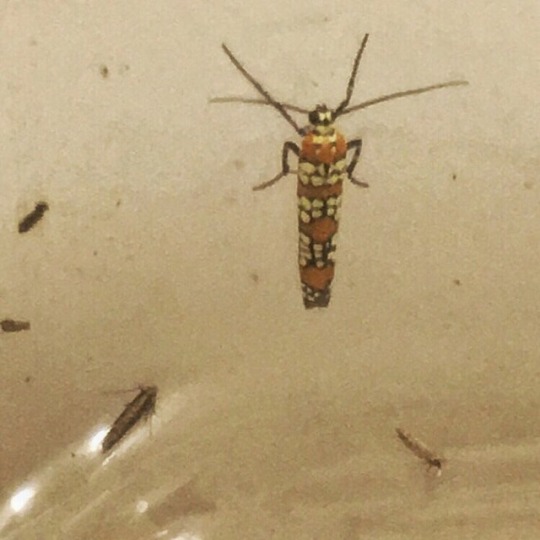
#Yponomeutidae, #Ermine moth. Someday I'll get a macro lens so I can have better #insect pictures. Today is not that day.
2 notes
·
View notes
Text

Colonies of thousands of caterpillars protect themselves from predators behind their dense webs with which they envelop entire bushes, that they defoliate completely.
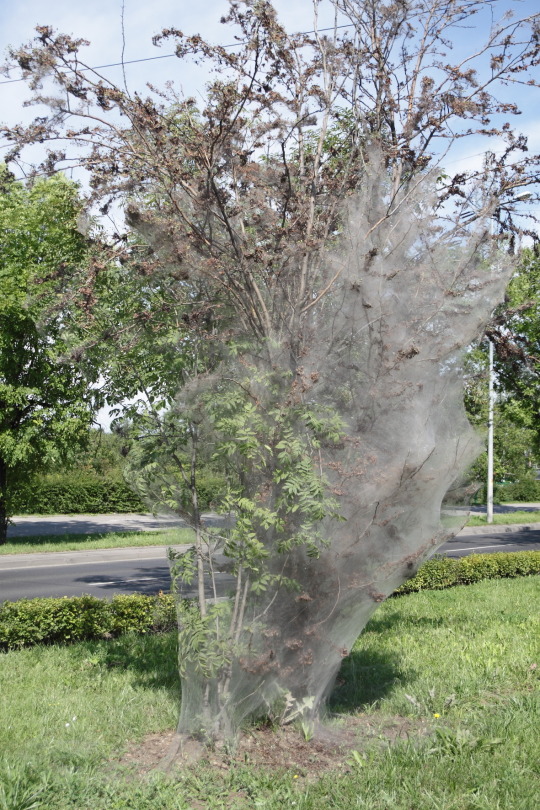
An infested eurpean spindle (Euonymus europaeus, Polish: trzmielina pospolita).
Birds avoid such bushes because the webs stick to their plumage. Photo @yoda-ii
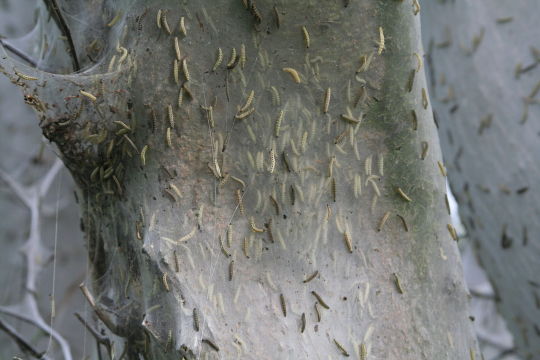

the caterpillars of...
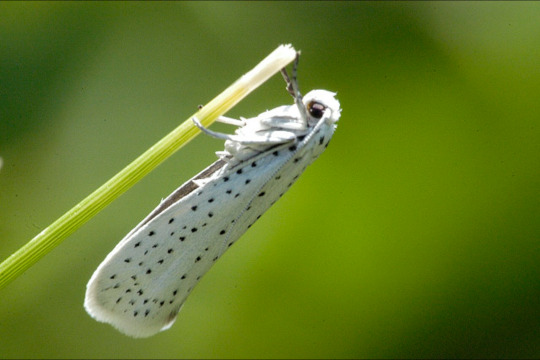
... the spindle ermine (Yponomeuta cagnagella, Polish wrzecionowata ćma gronostajowa), a moth.
The family Yponomeutidae, known as the ermine moths, occurs also in the Americas.
#Euonymus europaeus#eurpean spindle#Yponomeuta cagnagella#spindle ermine#moth#wrzecionowata ćma gronostajowa#insects#caterpillars#animals#plants#bushes#pest#biology
26 notes
·
View notes
Photo
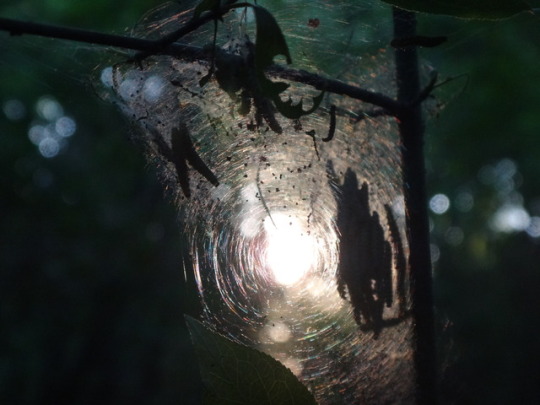

365/42: Caterpillars at home
365/40: Cool down
#caterpillars#sunset#tagesphoto#phototagebuch#photodiary#Yponomeutidae#ermine moths#gespinstraupen#prater#photo of the day#pond#10.5.2018#10.5.2017
0 notes
Note
i rescued an ailanthus webworm moth off my window screen today and decided to read up on yponomeutids online. im a fourth-year entomology undergrad student and only just then in that moment did i discover that the name yponomeutidae was an 18th century typing mistake they just.. kept. i wish i'd never read that. ill be thinking of them as TYPOnomeutidae for the rest of my life.
____________________________________________________________
I had to go look this up because I know next to nothing about lepidoptera. I know the family but didn’t know it was a typo!
From Bugguide “ Family is named for genus Yponomeuta Latreille, 1796. That name was apparently a typographic error (!) for Hyponomeuta (1). That would be a combination of Greek prefix hypounder, plus nomeuta (unknown, perhaps from Greek pno air; breathing, plus meuta?) (2). Genus Hyponomeuta was apparently used as a name at a later date “
This is pretty cool! I, for one, accept out typonomeutidae overlords
4 notes
·
View notes
Photo
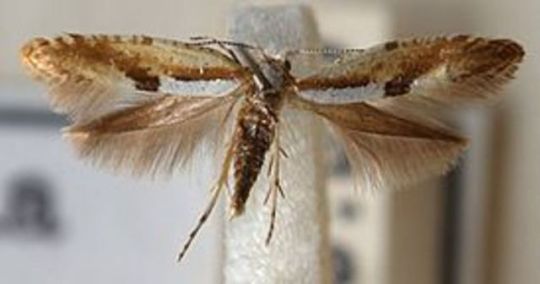
Argyresthia pruniella
Argyresthia pruniella, the cherry fruit moth or cherry blossom tineid, is a moth from the family Yponomeutidae, the ermine moths.
More details Android, Windows
0 notes
Text
Mechanism of resurgence of the diamondback moth, Plutella xylostella (L.) (Lepidoptera: Yponomeutidae)
http://dlvr.it/NqSGnW
0 notes
Photo

Bug of the Day
This lovely little micro is sometimes called the honeycomb (Argyresthia alternatella), because of the pattern on the wings.
82 notes
·
View notes